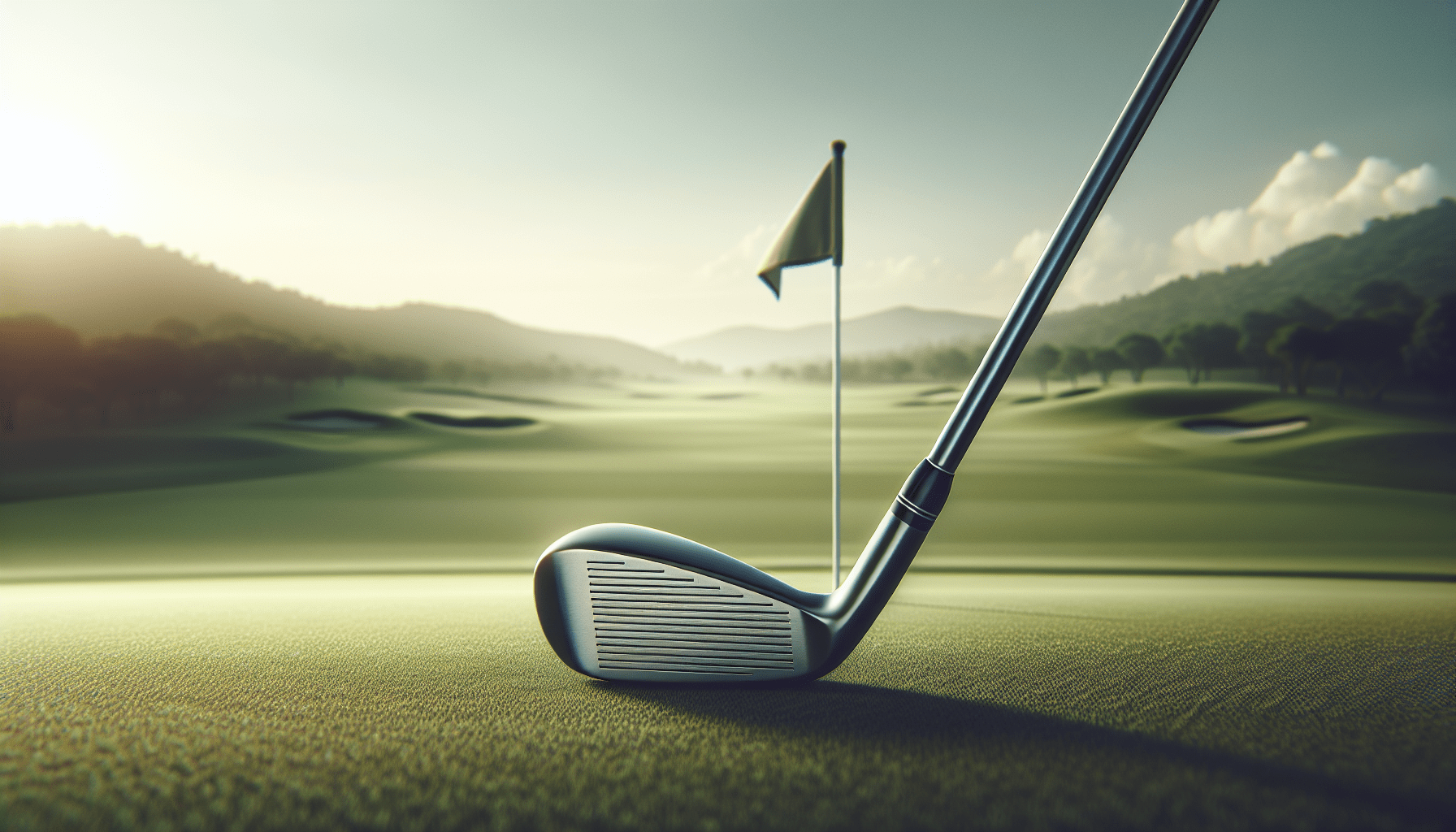Don't miss our holiday offer - up to 50% OFF!

How To Choose The Best Golf Clubs For Beginners
Discover essential tips for selecting the best golf clubs for beginners. Learn about clubhead size, shaft flexibility, and more to start your golfing journey right!
In “How To Choose The Best Golf Clubs For Beginners,” you’ll discover everything you need to start your golfing journey on the right foot. This guide breaks down what makes a golf club suitable for beginners, from the ideal clubhead size to the importance of shaft flexibility. By the end, you’ll be well-equipped with the knowledge to make an informed decision, ensuring your initial foray into the sport is both enjoyable and successful.
Have you ever walked into a golf store and felt overwhelmed by the sheer variety of golf clubs staring back at you? If so, you’re not alone! Choosing the best golf clubs for beginners can be a daunting task, but don’t worry, we’re here to help. This guide will take you through everything you need to know to make an informed decision and get you started on the right foot.
Why the Right Golf Clubs Matter
Selecting the appropriate golf clubs is crucial for your development as a golfer. The right set can significantly improve your game and boost your confidence on the course. Conversely, a poor choice might make the game unnecessarily difficult and less enjoyable. As a beginner, your primary goal should be to find clubs that are forgiving and easy to use.
Understanding the Different Types of Golf Clubs
Before diving into the specifics, it’s essential to understand the different categories of golf clubs. Each type has a distinct purpose and learning how they function will make your selection process more manageable.
Driver
Your driver is often the most recognizable club with the largest head. Its main function is for long-distance shots off the tee.
Fairway Woods
Fairway woods are versatile clubs that can be used for long-distance shots either from the fairway or the rough.
Hybrids
Hybrids blend the qualities of woods and irons, making them easier to hit. Many beginners find them an excellent alternative to the more challenging long irons.
Irons
Irons are used for a wide range of shots, from mid to short-range. They are numbered from 1 to 9, each with different loft angles.
Wedges
Wedges are a subset of irons with higher lofts, used for short, high shots designed to get you out of tricky situations.
Putters
Putters are used mainly on the green to roll the ball into the hole. They come in many shapes and sizes, and choosing the right one can significantly improve your putting game.

Key Factors to Consider
When selecting your first set of golf clubs, several factors should be on your radar. By evaluating these, you can ensure you choose a set that suits your needs and helps you improve quickly.
Budget
Your budget plays a major role in determining which clubs you can afford. Golf can be an expensive sport, but there are plenty of affordable beginner sets that offer great quality.
Club Head Size
A larger club head provides a bigger sweet spot, making it easier for you to hit the ball. Beginners should opt for larger club heads to maximize forgiveness.
Shaft Material
Golf club shafts are generally made from either steel or graphite. Steel shafts are heavier but offer more control, while graphite shafts are lighter and can help generate more swing speed.
Flex
The flex of a club’s shaft influences the accuracy and distance of your shots. Beginners generally benefit from a more flexible shaft.
Custom Fitting
While custom-fitting can be more expensive, it’s an option worth considering. Custom-fitted clubs match your unique physical dimensions and swing style, helping you to play more consistently.
Creating Your Beginner Golf Club Set
Now, let’s talk about how to create a beginner-friendly golf club set that covers all the bases without breaking the bank.
Driver
Look for a driver with a larger club head and higher loft, which typically ranges between 10 and 12 degrees. This setup helps you achieve better elevation and distance, especially when your swing speed is still developing.
Driver Characteristics for Beginners:
| Feature | Recommendation |
|---|---|
| Club Head Size | Larger |
| Loft | 10-12 degrees |
| Shaft Material | Graphite |
| Flex | Regular or Senior |
Fairway Woods
A 3-wood or a 5-wood is excellent for beginners, especially those struggling to get distance with their drivers. These clubs are versatile and easier to control.
Fairway Wood Characteristics for Beginners:
| Feature | Recommendation |
|---|---|
| Club Head Size | Medium to Large |
| Loft | 15-18 degrees (3-wood), 20-22 degrees (5-wood) |
| Shaft Material | Graphite |
| Flex | Regular or Senior |
Hybrids
Two to three hybrids (3H and 4H) can replace tougher long irons and can be used in various situations.
Hybrid Characteristics for Beginners:
| Feature | Recommendation |
|---|---|
| Club Head Size | Medium |
| Loft | Corresponding to 3-iron and 4-iron |
| Shaft Material | Graphite |
| Flex | Regular or Senior |
Irons
A set of irons from 5 to 9 will cover most situations you’ll encounter. Look for cavity-backed irons which offer more forgiveness.
Iron Characteristics for Beginners:
| Feature | Recommendation |
|---|---|
| Club Head Design | Cavity-backed |
| Loft | Standard for each number |
| Shaft Material | Steel or Graphite |
| Flex | Regular or Senior |
Wedges
Start with a pitching wedge (PW) and a sand wedge (SW). These will cover most of your short-game needs.
Wedge Characteristics for Beginners:
| Feature | Recommendation |
|---|---|
| Loft | PW (44-48 degrees), SW (54-58 degrees) |
| Shaft Material | Steel or Graphite |
| Flex | Regular or Senior |
Putter
Finally, choose a putter that feels comfortable for you. Blade and mallet are two main designs, with mallet putters usually offering more forgiveness.
Putter Characteristics for Beginners:
| Feature | Recommendation |
|---|---|
| Design | Mallet |
| Length | Standard or Adjustable |
| Material | Steel |

Considerations for Women and Senior Golfers
Different groups of golfers may have specific needs, and it’s essential to keep these in mind when selecting clubs.
Women
Women’s clubs are generally lighter and have more flexible shafts. Additionally, they often feature smaller grips and shorter lengths to better fit a woman’s frame.
Women’s Golf Clubs:
| Feature | Recommendation |
|---|---|
| Club Head Size | Medium to Large |
| Shaft Material | Graphite |
| Flex | Ladies |
| Grip | Smaller |
Seniors
Senior golfers may benefit from lighter clubs and more flexible shafts to accommodate slower swing speeds. Clubs designed for seniors often have more loft to help get the ball airborne.
Seniors’ Golf Clubs:
| Feature | Recommendation |
|---|---|
| Club Head Size | Medium to Large |
| Shaft Material | Graphite |
| Flex | Senior |
| Loft | Higher |
Buying Tips
Purchasing clubs isn’t just about knowing what to buy but also how to buy it. Here are some tips to help you make the best purchase:
New vs. Used Clubs
While new clubs might be more appealing, used clubs can offer excellent value for beginners. Check online marketplaces, golf stores, or even your local driving range for good deals.
Try Before You Buy
Whenever possible, test clubs before making a purchase. Many golf stores provide simulators and driving ranges where you can test different clubs.
Research Reviews and Ratings
Spend some time reading reviews and ratings online. Trustworthy websites and customer testimonials can give you an idea of what to expect from a set of clubs.
Warranty and Return Policy
Make sure to check the warranty and return policy of the clubs. Some stores offer trial periods, allowing you to return the clubs if they don’t meet your expectations.
Maintaining Your Golf Clubs
Once you’ve purchased your golf clubs, proper maintenance will ensure they last longer and perform better.
Cleaning
Regularly clean your clubs after each game. Use a soft-bristle brush and soapy water to clean the grooves on your irons and wedges. For woods and hybrids, a damp cloth is sufficient.
Storage
Store your clubs in a dry place to prevent rust and damage. Using headcovers can protect the heads from scratches and dings.
Regular Check-Up
Periodically check your clubs for any signs of wear and tear. Ensure the grips are not worn out and the shafts are free from damage.
Final Thoughts
Choosing the best golf clubs for beginners doesn’t have to be a stressful experience. By understanding the different types of clubs, recognizing what to look for, and considering your specific needs, you can make an informed decision. Remember, the most important thing is to have clubs that make the game enjoyable and help you to improve your skills. So get out there, find the right set, and start enjoying the wonderful game of golf!
Feel free to revisit this guide as you advance in your golfing journey. The best clubs for you today might not be the best clubs for you in a few years, and that’s okay. The key is to keep learning, practicing, and having fun! ⛳
